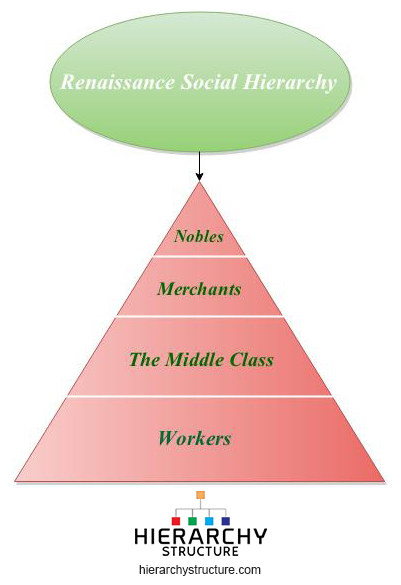The Renaissance was a period between the 14th and 15th century and was considered as a bridge between the middle ages and the modern history. This time was started as a cultural movement in Italy, especially in Florence in the late medieval period and then spread later in other parts of Europe as well. During this time, there was a social hierarchy system which was followed.
According to this system, the people were divided into 4 major classes or groups and each group had its own responsibilities, functions and respect in the society. To know more about the hierarchy during the renaissance, you can read the following given information:
 Nobles
Nobles
The class of the nobles was the most respected class during the renaissance period and owned most of the land. They were wealthy individuals who were highly respected and lived on large estates. The nobles owned big businesses and followed the basic rules of chivalry. The nobles included the military officers, politicians and royal advisers.
Merchants
The next class or level during the renaissance years belonged to the merchants. The merchants were the newly rich people who gained wealth by working hard in the industries and mainly worked in fields like wool, banking and boat making etc. The merchants tried to marry into noble families to move up the ladder and become part of the nobles. But the nobles tried to maintain distance from the merchants due to this reason.
The Middle Class
The next class in the Renaissance days was the middle class. The middle class consisted of the shopkeepers and other professionals. The middle class was not a very wealthy class but the wealth depended upon the hardwork they put in their jobs. Sometimes, the middle class people moved up the pyramid and became the merchants by doing well in their professions.
Workers
The fourth and the bottom-most level belonged to the workers or the unskilled workers. These people were not specifically skilled and had no job protection. They took up any jobs and were dependent on their employers. Workers who violated any rules could be discharged from their jobs and often their wages were withheld.
The lower class among the workers belonged to the peasants who lived in rural areas and worked on small pieces of agricultural land to produce foods and other staples for the rest of the population. Starvation was common among these people.
Know about Venice Social Hierarchy.
